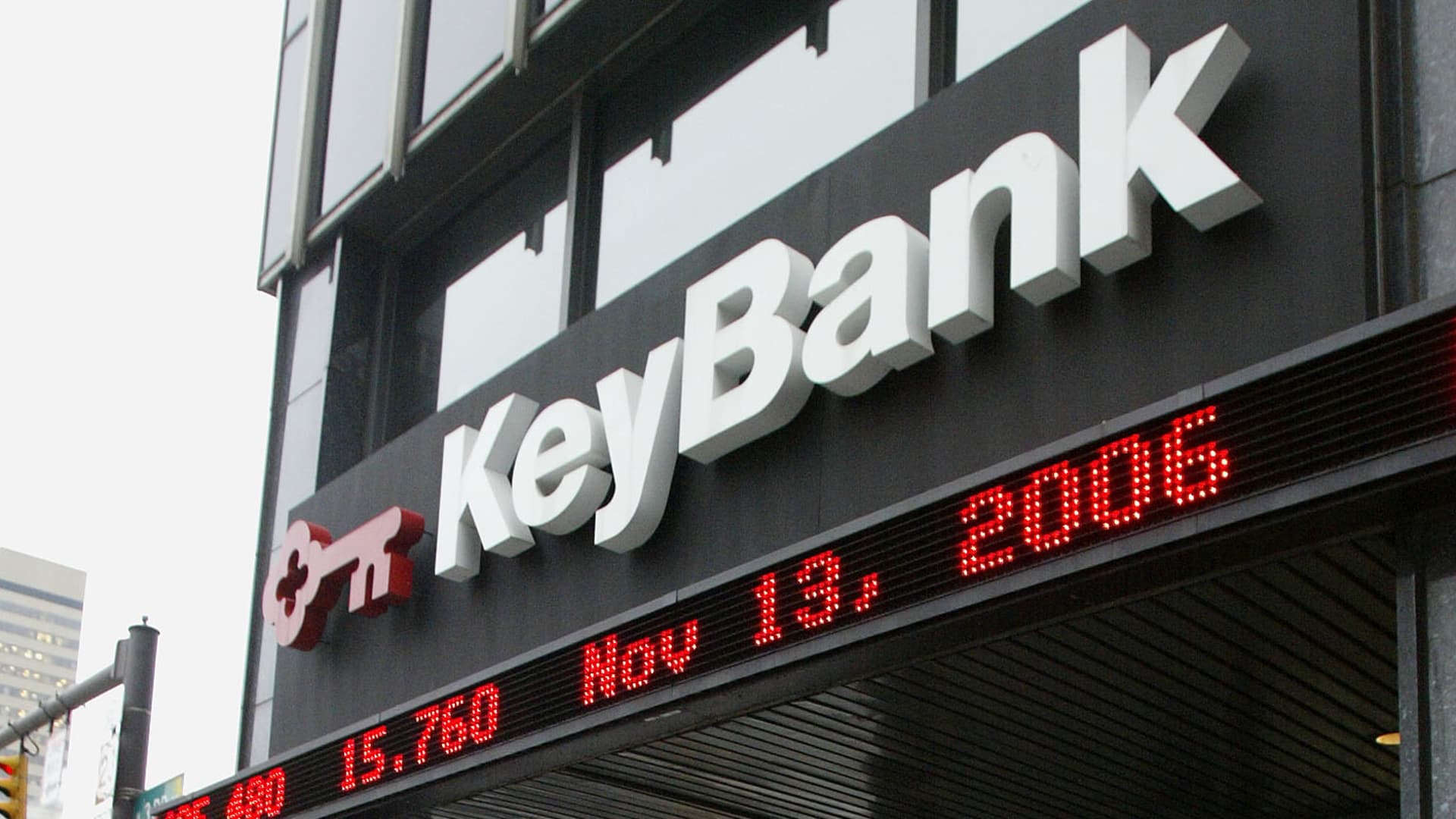
Forget about Treasury bills or certificates of deposit. Just look at the fat dividend yields now on offer among regional banks after the March meltdown triggered by the failure of Silicon Valley Bank, Signature Bank and Silvergate Capital. KeyCorp , an $11 billion market cap bank based in Cleveland, yielded 6.4% as of the Tuesday market close. Atlanta’s Truist Financial ($41 billion) now yields 6.2% while Minneapolis’s U.S. Bancorp ($53 billion) pays 5.1% on its common stock. The list goes on and on. Comerica of Dallas pays out the annual equivalent of 5.8%. Columbus, Ohio’s Huntington Bancshares wires to investors’ accounts or cuts checks equal to 5.5%. Cincinnati’s Fifth Third Bancorp pays 4.8%. Will the dividends be cut? Might some be omitted all together? After all, high dividend yields are often a sign of financial or business distress, or a red flag that the payments so many mom-and-pop investors depend on are unsustainable. That’s what happened during the Global Financial Crisis of 2008-2009, when bank after bank either passed the dividend or cut it to a token penny a share. It was just last week that embattled First Republic Bank, facing the withdrawal of a reported $70 billion in deposits , suspended its 27 cents quarterly dividend. Not this time But not this time. Wall Street just doesn’t think most payouts will be cut — so long as any recession this year stays on the mild side. Why’s the Street so sanguine? Because earlier banking crises were mostly caused by credit events. In 2008, Bear Stearns was lost in towers of mortgage-backed securities, while Lehman Brothers went belly up thanks to large positions in subprime mortgages. Years before, more than 1,000 savings and loans went bust in the S & L crisis , thanks to lax regulation, bad investments in commercial real estate and junk bonds, and a helping of fraud. In the 1980s, Continental Illinois National Bank and Trust loans to the oil patch went bad (creating the term “too big to fail”). So did Citigroup loans to Latin American sovereign governments. The challenge banks face today centers instead on the fastest rise in interest rates in two generations. Banks that hold Treasury bonds yielding 2% or mortgages at 4% suddenly find themselves in a higher-rate environment, and those bonds and mortgages held as capital have declined in price. “Unlike [2008-2009] or even 1990, those were credit debacles that crushed the banks, forced them to cut and eliminate dividends, pull back buybacks,” RBC Capital bank analyst Gerard Cassidy said on CNBC’s “Fast Money” on Monday. “This is an interest rate problem” and, in this environment, “banks know that if they maintain the dividends through the next cycle, which is maybe what we’re in right now, they will rerate coming out of the cycle. So dividend cuts I think [are] the last thing they need to do. Plus they’ve got strong capital levels today, unlike in 2007, plus they have plenty of liquidity, among the biggest banks.” As a reality check, CNBC ran a screen on the stocks in the Invesco KBW Bank ETF (KBWB), ranking them by the lowest dividend payout ratios , which measures dividends as a percentage of net income. We also looked at the yields themselves, plus the percentage of sell-side analysts rating the bank a buy and the potential upside if the stock hit the average analyst’s share price target. Looking outside that group of banks, New York Community Bancorp ‘s yield is more secure now after it bought most of the assets of Signature Bank earlier this week, according to Jenny Harrington, portfolio manager at Gilman Hill. Speaking on CNBC’s “Halftime Report” on Monday, Harrington argued that one bank’s loss is often another’s gain, saying that NYCB earnings will rise 20% as a result of the acquisition, and its book value expand by 15%. NYCB yielded 7.4% at Tuesday’s close. Little to no dividend growth The conventional wisdom today is that the pressure on bank profits makes the outlook for dividend growth in the sector more dicey, rather than jeopardizing the safety of current payouts. “Our dividend growth expectations have come down,” due to the fallout from Silicon Valley, Signature and First Republic, “as well as the economic impact of the Fed’s efforts to quell inflation via sharply higher rates over the past year,” Daniel Peris, head of the Strategic Value Dividend team at Federated Hermes, recently wrote. “Despite these lower dividend growth expectations, we believe these bank holdings still have attractive dividends,” Peris added. “Given a slowing economy we expect our banks to run their balance sheets more conservatively (and could be forced to via tougher regulation over the coming years); this would likely put a further damper on dividend growth.” A final straw in the wind: Wall Street has issued dozens of research reports since Silicon Valley Bank went under. Almost none of them so much as mention the word dividend. Take that as a sign most investors are confident the dividend checks will still roll.
